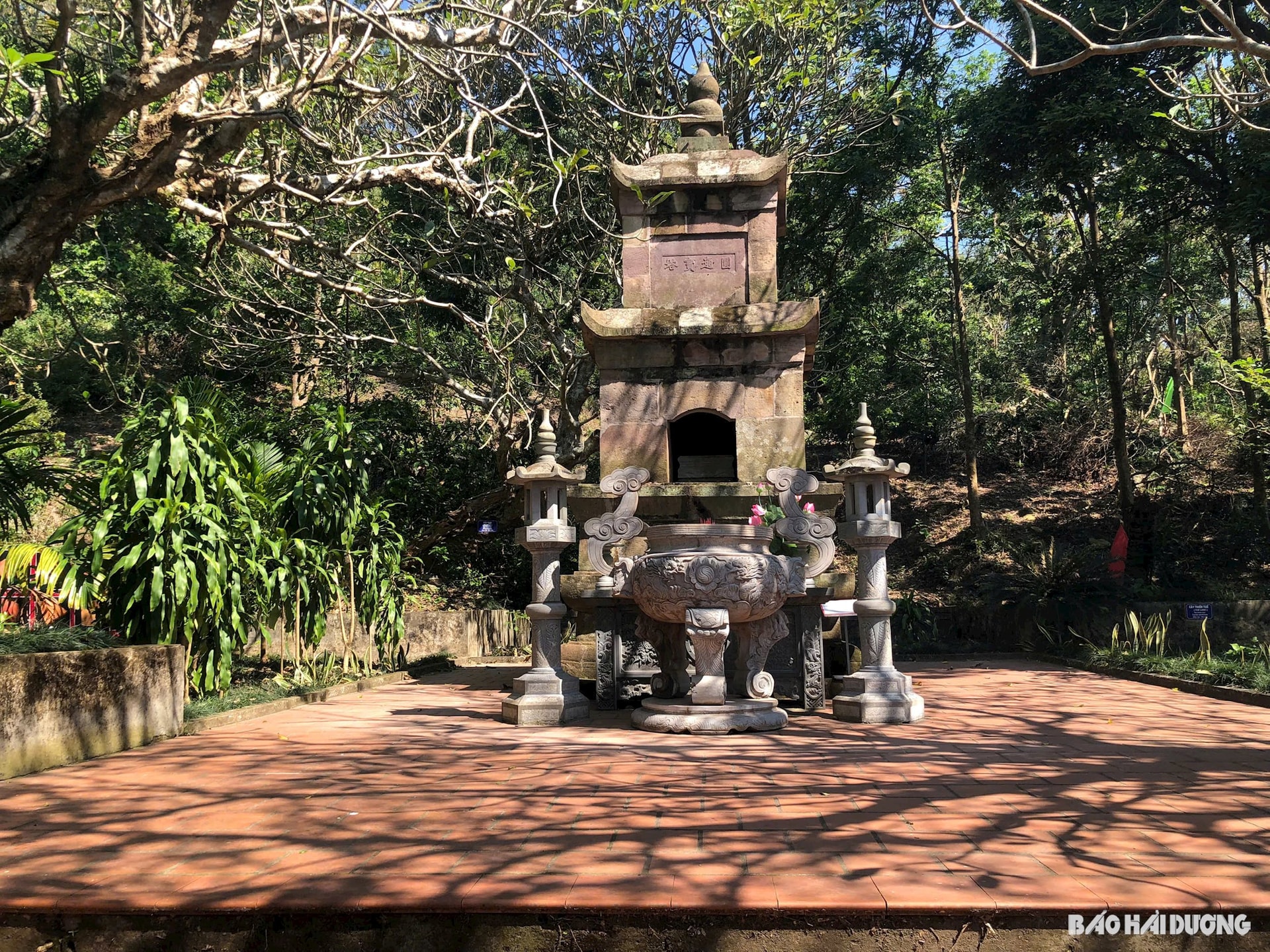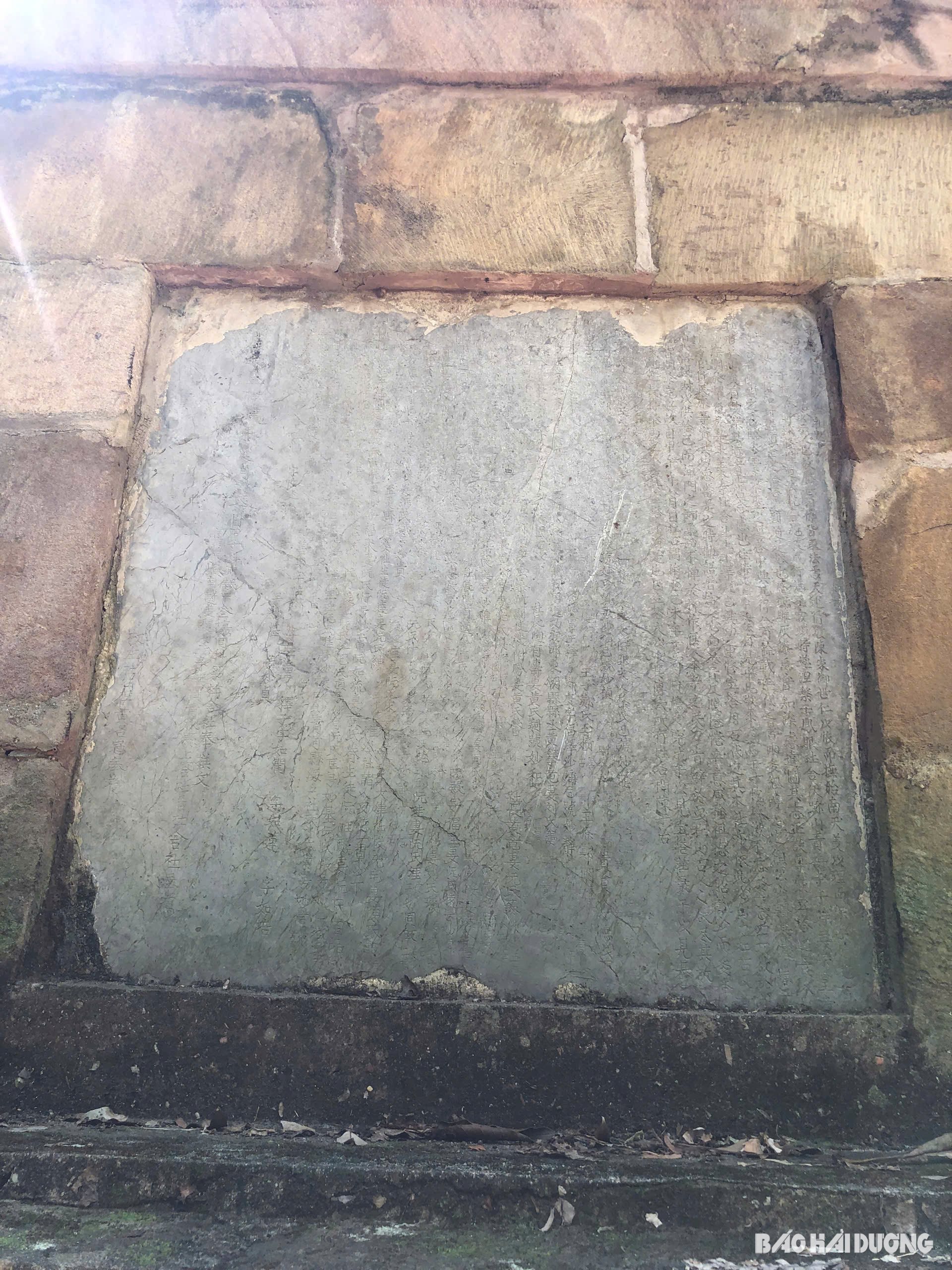Vien Thong Bao Thap in Thanh Mai Pagoda (Chi Linh, Hai Duong) is where the relics of Zen Master Phap Loa - the second Patriarch of the Truc Lam Zen sect are located.

Vien Thong Bao Thap is currently located behind Thanh Mai Pagoda, Hoang Hoa Tham Commune, Chi Linh City. Like the three famous stone towers of the three founders of the Truc Lam Zen sect, Vien Thong Bao Thap was built under the Tran Dynasty with baked bricks and was rebuilt in stone by Zen master Nhu Trac in 1715.
In 1330, after handing over his robe and the heart-felt verse to Zen Master Huyen Quang, Zen Master Phap Loa passed away at Quynh Lam Monastery at the age of 47. His disciples carefully placed his body in a coffin, brought the hearse to Thanh Mai Mountain, and respectfully placed it in the place he had chosen during his lifetime. Retired Emperor Tran Minh Tong gave the monk the title Tinh Tri Ton Gia, and gave him 10 taels of gold to build a tower and named it Vien Thong Bao Thap. Before that, due to a premonition that he would not be able to live long, the Zen Master had chosen his disciples Hoang Te and Huyen Giac to prepare a tomb tower on Thanh Mai Mountain during the opening of the landscape in 1329.
According to the Thanh Mai Vien Thong Thap Bi stele, Zen master Phap Loa's secular name was Dong Kien Cuong, born in 1284. His father was Dong Mo Thich, his mother was Vu Tu Cuu. In 1304, he was allowed by the Buddhist Emperor Tran Nhan Tong (the first Patriarch of the Truc Lam Zen sect) to become a disciple and practice Buddhism in Con Son. The following year, he was given the title Phap Loa. On the first day of the Lunar New Year in 1308, the Buddhist Emperor Tran Nhan Tong appointed him as the second Patriarch of the Truc Lam Zen sect.

According to the inscription on the restoration of the second Truc Lam pagoda (1718), after nearly 400 years of "a lot of sun and rain, the brick pagoda was destroyed many times", so the abbot of the pagoda at that time, Zen master Nhu Trac, wished that "the precious pagoda would be dignified and last a long time", and was very "respectful and secretly grateful" to the local people to request the restoration of the pagoda, using stone to replace the old brick pagoda. The local people joined hands to carry the stone back, encouraging officials and people from all over to contribute. At that time, people were kind, some more, some less, contributing money and offerings to the Zen temple. The master and his disciples did not spare the merit and joined the people in carrying the stone from the mountain. After more than 1 year of restoration, in November of the year At Mui (1715), the Vien Thong pagoda was completely restored. Looking at the solemn pagoda, the foundation is solid, as if it would last forever.
The tower is about 250 m high, leaning against Phat Tich mountain and facing a deep valley in the middle of the forest. Unlike Dang Minh tower, Hue Quang tower is built of green slate, Vien Thong Bao Thap is built of Thanh Mai mountain stones - gray-brown rough stone with a 3-storey structure.
The square tower base, each side is 3.29 m long, 1.1 m high, made of stone, carved with lotus petals. The tower base is like a lotus platform supporting the altar. The first floor is attached to the tower base to form a complete block. Above is the altar, the altar door is 0.75 m high, 0.65 m wide, with a stone statue of the Venerable Phap Loa, a stone incense altar and an incense bowl. The incense altar is decorated with chrysanthemums, lotuses, and dragons facing the sun. The two upper floors are smooth stone, gradually tapering to the roof. The third floor is engraved with the four words Vien Thong Bao Thap (圓 通 寶 塔). On the top of the tower is a vase of nectar. Behind the tower is a stone stele, the name Truc Lam De Nhi To Thap, engraved on a green stone slab measuring 1.1 x 0.65 m in 1718. Around the tower are many banyan trees, cypress trees, and ancient phong huong trees.
In December 1979, Mr. Tang Ba Hoanh, an officer of Hai Duong Museum, discovered an ancient stele from the Tran Dynasty, erected when the tower was first built, the Thanh Mai Vien Thong Thap Bi stele.
In 1994, monk Thich Chi Trung, only 20 years old, crossed mountains and forests to become abbot of the pagoda in the context of the pagoda tower having been deserted and ruined for many years. In the fall of 1998, to start the effort and process of restoring the pagoda tower, the monk collaborated with the Hai Duong Provincial Museum to excavate the entire area around the tower, collect the fallen stones and artifacts, supplement the lost stones and have Ninh Binh stonemasons assemble and rebuild the tower as it is today.
TRAN DINH SON